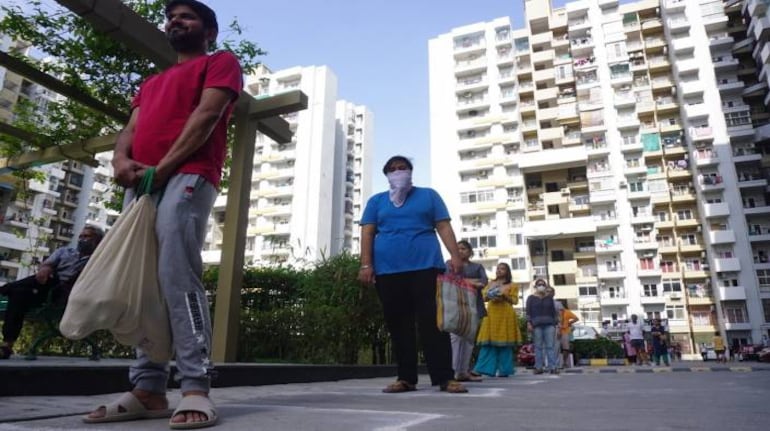



The COVID-19 pandemic has brought about a radical transformation in our lives in ways never imagined before. With the announcement of the lockdown by the government following the first wave last year, the commercial world moved rapidly from business as usual to cautious travel, office closures, and work-from-home mandates creating a real-time impact on the economy, industries, jobs and health.
Nearly 17 months since the first lockdown, with vaccination campaign picking up steam and a target time frame for complete inoculation, one can look forward to some resemblance of normalcy.
The real estate sector, which was already performing poorly before the pandemic owing to the liquidity crunch emanating from the NBFC crisis, was in a state of shock with the announcement of lockdown. Though the first wave did not associate with very high daily infection numbers or deaths, it was the lockdown that had a major impact, especially on the migrants and labourers.
The sudden halting of economic activity made it next to impossible for migrant labourers dependent on daily wages to survive in cities. Not only the real estate sector but the allied industries dependent on the construction sector also inflicted heavy losses during the year 2020. From halted construction activities to a mass exodus of migrant workers, the second quarter of 2020 was a watershed quarter in the history of economic downturns.
September 2020 marked the inflection point for real estate economics in the National Capital Region
Like most sectors, the real estate industry also looked at defining the alternative channels of operability and re-engineered the sales channels with prospective buyers. The pricing dynamics were relooked and offers such as flexible deferred payments, mega-discounts and free parking or furnishing were floated around by multiple developers from National Capital Region (NCR).
The policymakers also ensured indirect creation of demand stimulus for the buyers. This can be corroborated by the fact that the RBI kept the rates low with an accommodative stance making the home loans affordable in times of adversity. This conspired into home sales upward movement in the early September of 2020.
Attitudinal shift among NCR homebuyers; preference for assets with low completion cycle
With the pandemic-infused economic stress and uncertainty, buyers in NCR became risk averse. There was a preferential shift towards residential properties that were ready to move in, or projects that had low completion cycle. Buyers gravitated towards smaller projects and individual plotted developments rather than large projects that would take a longer time to complete.
There was also a noticeable preference for builders and developers of repute and a good track record with regard to project development, pushing aside fly-by-night developers with a questionable reputation. The pent-up demand during the first wave was reflected in sales in Q3 and Q4 of 2020.
Workforce became paramount for business continuity during the second wave
Just before the advent of the second wave, many families in NCR experienced loss of near and dear ones. The psychological impact of the health crisis was much greater than the impact of economic stress owing to the lockdown.
The experience from the lockdown during the first wave helped developers draw up better exigency plans during the second wave. Several developers acknowledged the importance of workforce as an integral part of business continuity. Migrant labourers were provided shelter and food and in some cases their Antigen and RTPCR tests were sponsored, along with other medication and healthcare costs.
On the supply side, the situation was improving. Transactions initiated by developers in October ensured there was plenty of liquidity. The sector saw stability during the second wave, unlike the first wave when prices were reduced to attract customers. The experience from the first lockdown also helped them plan digital and virtual marketing strategies to ensure zero bottleneck in sales.
In H1 2021, sales of residential units in NCR’s primary market nearly doubled compared to the H1 2020 volumes. With panic due to the second wave, sales momentum was impacted towards the end of Q1 2021. However, unlike 2020, conversion of residential enquiries into sales cushioned the residential market in Q2 2021.
Prices for residential real estate in Delhi-NCR during the second wave largely remained at par with the H1 2020 levels.
Currently, the real estate market in NCR is experiencing a turnaround. With the economy gradually recovering, the market is expected to witness an increase in purchasing power among people as the affordability factor has improved significantly over the last six to seven years.
Going forward, buyers are awaiting an update on the new circle rates in the region which is likely to impact the real estate dynamics in the medium to long term perspective.
Discover the latest Business News, Sensex, and Nifty updates. Obtain Personal Finance insights, tax queries, and expert opinions on Moneycontrol or download the Moneycontrol App to stay updated!
Find the best of Al News in one place, specially curated for you every weekend.
Stay on top of the latest tech trends and biggest startup news.